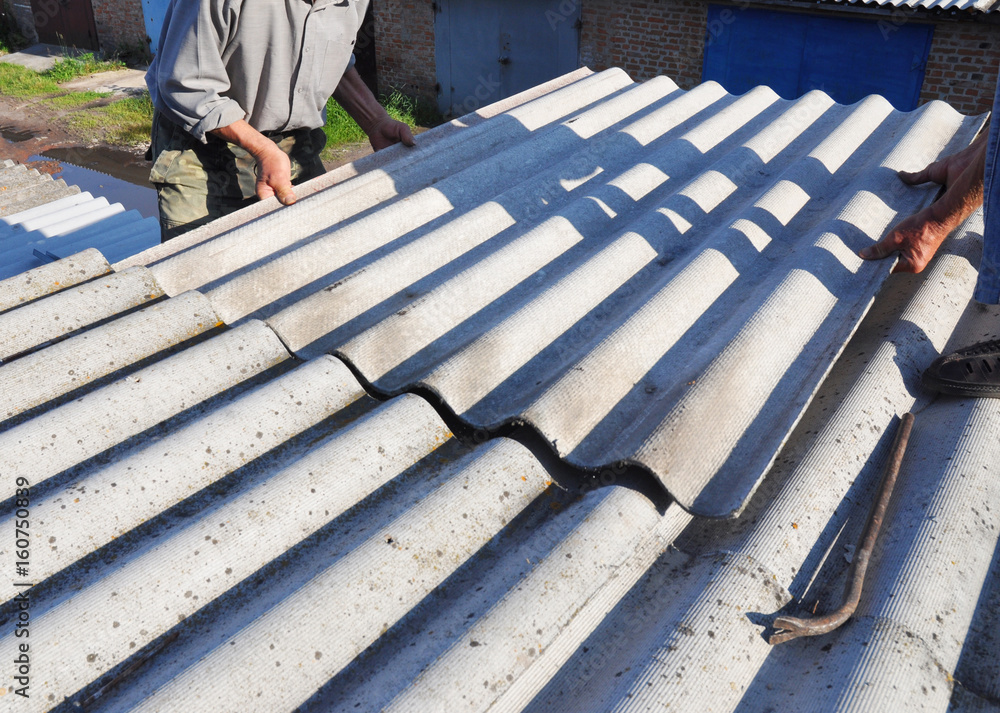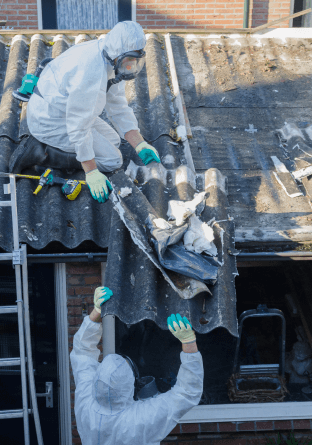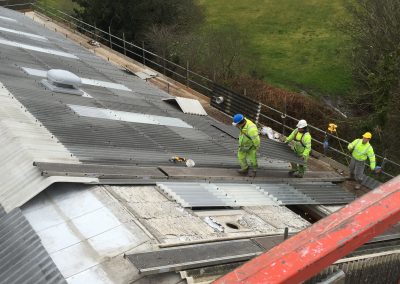Asbestos Roof Removal Licenses And Accreditation Best & Cheap Removal Services Available
Asbestos Roof Removal Licenses And Accreditation Best & Cheap Removal Services Available
Blog Article
Asbestos Risk Assessment For Roofing Find A Licensed Asbestos Removalist

Asbestos is a naturally occurring mineral that has been broadly utilized in construction materials as a result of its fire-resistant properties and sturdiness. However, the health risks associated with asbestos exposure have become more and more clear through the years, resulting in stringent regulations and guidelines for its removal, commonly referred to as asbestos abatement guidelines. These guidelines aim to attenuate the danger of exposure to asbestos fibers throughout removal and demolition actions.
Understanding the importance of correct asbestos abatement procedures is crucial for both staff and most people. When asbestos-containing materials are disturbed, microscopic fibers can turn out to be airborne, leading to inhalation and potential critical health points such as lung cancer and mesothelioma. This heightened awareness has prompted the development of comprehensive guidelines that should be adhered to by professionals concerned in asbestos abatement.
Prior to commencing any abatement project, it's important to conduct an intensive assessment of the site. This entails identifying the presence of asbestos-containing materials, assessing their situation, and evaluating the potential risks. A qualified inspector, normally educated and certified, sometimes performs this assessment. This preliminary step ensures that each one essential precautions could be taken in the course of the removal process.
Once the assessment is complete, the next phase entails creating a detailed abatement plan. This plan ought to define the methods to be used, safety measures to be applied, and waste disposal procedures. It should embody the specific work practices that shall be followed to ensure the safety of each staff and occupants close by. Communication with all stakeholders is paramount at this stage to ensure everyone understands the procedures and safety measures in place.
Community Support For Asbestos Affected Areas How To Get Your Roof Replaced For Under 1000
Personal protective equipment (PPE) is a crucial element of asbestos abatement guidelines. Workers concerned in the removal process must wear applicable gear, together with respirators, disposable coveralls, gloves, and goggles. This PPE serves as a barrier between the worker and potentially hazardous materials, reducing the risk of inhalation or pores and skin contact with asbestos fibers.
Containment is one other essential element of safe asbestos abatement. The work area have to be clearly delineated to stop unauthorized access. This often includes the utilization of plastic sheeting to seal off the world and prevent asbestos fibers from escaping. Negative air stress units can also be utilized to guarantee that any airborne fibers are contained throughout the designated work web site.
Wet methods are recommended for asbestos removal when feasible. By dampening materials, the discharge of asbestos fibers into the air is significantly reduced. This practice points to the importance of making certain that the environment remains moist in the course of the removal process. In addition, eradicating asbestos as entire sections or items, as a substitute of breaking them apart, additional minimizes the risk of releasing fibers.
After the removal process is full, thorough cleansing of the work area is essential. This involves the usage of specialised vacuums geared up with HEPA filters to guarantee that any residual asbestos fibers are effectively captured. Additionally, all surfaces must be thoroughly wiped down, and air tests are sometimes conducted to substantiate that no asbestos fibers stay within the environment.
Asbestos Roof Removal Services In Sydney Hazardous Materials & Disposal Services
Proper disposal procedures for asbestos waste are outlined in the guidelines to prevent exposure to asbestos in landfills or different disposal sites. Asbestos-containing materials have to be double-bagged in leak-tight containers and transported in accordance with native regulations. Only designated disposal sites which are equipped to handle hazardous waste should obtain asbestos materials.

Training and certification are also fundamental parts of the guidelines. All personnel concerned in asbestos abatement should bear a rigorous training program targeted on safe work practices, hazard recognition, and emergency response strategies. This training ensures that staff are competent in managing the inherent risks associated with asbestos and might intervene successfully in case of an emergency.
Compliance with local, state, and federal regulations is not just a best practice however a legal requirement. Agencies such as the Environmental Protection Agency (EPA) and the Occupational Safety and Health Administration (OSHA) have established regulations governing asbestos abatement. These regulations present a framework for ensuring that asbestos is managed safely and responsibly, defending both workers and the common public.
In conclusion, adhering to asbestos abatement guidelines is important for guaranteeing the safety of everybody involved in or affected by an abatement project. From the preliminary assessment and planning phases to the actual removal and proper disposal of asbestos-containing materials, every step have to be approached meticulously - Importance Of Professional Asbestos Removal. Education and training are essential to cultivating a educated workforce able to implementing these guidelines successfully. As awareness of asbestos-related health risks continues to grow, compliance with these guidelines will contribute significantly to public health and safety. By following established protocols, we can mitigate risks related to asbestos exposure, safeguarding not simply staff, however the community as a complete
Monitoring And Maintaining Safety Standards Diy Awareness For Asbestos Removal
- Ensure correct identification and assessment of asbestos-containing materials (ACM) previous to beginning any abatement work to find out the extent and type of materials current.
- Utilize trained and certified professionals for the removal process to attenuate health risks and guarantee compliance with regulatory standards.
- Establish a containment space around the worksite using plastic sheeting and barriers to forestall the spread of asbestos fibers during abatement activities.
- Implement negative air strain systems to filter airborne particles and maintain air high quality within the containment area throughout the removal process.
- Conduct thorough inspections and air monitoring earlier than, during, and after abatement to confirm that asbestos levels are inside safe limits.
- Use appropriate private protective equipment (PPE) for staff, including respirators, disposable coveralls, and gloves, to guard towards exposure.
- Follow correct waste disposal protocols for ACM, making certain it is securely sealed and transported to designated hazardous waste amenities.
- Maintain detailed records of the abatement process, together with inspection stories, monitoring outcomes, and disposal certifications, for regulatory compliance.
- Provide clear communication with occupants and relevant stakeholders in regards to the abatement process, potential risks, and safety measures being applied.
- Stay updated with local, state, and federal regulations regarding asbestos management and abatement to make sure compliance and safety throughout the project.undefinedWhat are the main asbestos abatement guidelines I must be aware of?
The main guidelines include following federal and state regulations, conducting an assessment to identify asbestos presence, having a educated and certified contractor carry out the abatement, and ensuring proper cleanup and disposal of asbestos waste based on native environmental laws.

How can I tell if my home accommodates asbestos?
Asbestos could also be present in materials similar to insulation, floor tiles, and roofing. If your personal home was constructed before the Eighties, it’s advisable to have a professional inspection, as testing entails taking samples from suspected materials and sending them to a lab for analysis.
Asbestos Roof Removal Licenses And Accreditation Asbestos Roof Maintenance Services
What steps ought to I take if I find asbestos in my home?
If asbestos is discovered, it is crucial to not disturb it. You should contact a licensed asbestos abatement contractor to evaluate the scenario. They will evaluate whether to comprise, remove, or monitor the asbestos, depending on its situation and placement.
Are owners allowed to carry out their own asbestos abatement?
Generally, it is not recommended for owners to handle asbestos abatement on their very own as a outcome of health risks and legal implications. Abatement have to be carried out by certified professionals who're trained in safe handling and disposal methods to protect themselves and residents.
Risk Communication Regarding Asbestos Removal Video Guides For Safe Removal
What is the importance of air monitoring during asbestos abatement?
Air monitoring is crucial to ensure that asbestos fibers aren't launched into the environment during the abatement process. It includes sampling air earlier than, during, and after the work to verify that asbestos levels are under acceptable limits, thus protecting employees and occupants.
How do I select a professional asbestos abatement contractor?
Residential Asbestos Roof Removal Sydney Find A Licensed Asbestos Removalist
Look for contractors who're licensed, licensed, and have expertise in asbestos removal. Check their references, read evaluations, and confirm their credentials. It’s important that they observe native regulations and OSHA guidelines for glorious safety practices.
What ought to I count on in the course of the asbestos abatement process?
During the method, the work space will be sealed off, and containment measures shall be applied. The contractor will use specialised equipment to safely remove the asbestos material, adopted by thorough cleansing and disposal of all waste to make sure the realm is safe for re-occupancy.
Training Programs For Asbestos Removal Professionals What To Do If You Find Asbestos
What are the risks of not following asbestos abatement guidelines? Choosing The Right Method For Asbestos Roof Removal.
Failing to stick to guidelines can expose residents and staff to harmful asbestos fibers, resulting in serious health issues corresponding to mesothelioma and lung cancer. Legal consequences may arise, together with fines and potential litigation from violations of safety regulations.
Community Initiatives For Safe Asbestos Removal Risks Associated With Asbestos Roofs
How usually should I truly have my property inspected for asbestos?
For older homes or properties that may undergo renovations, regular inspections each few years are advisable. Additionally, if any renovations or disturbances happen, an inspection must be conducted to make sure no hidden asbestos is current that might pose health risks.
Full Article site link Report this page